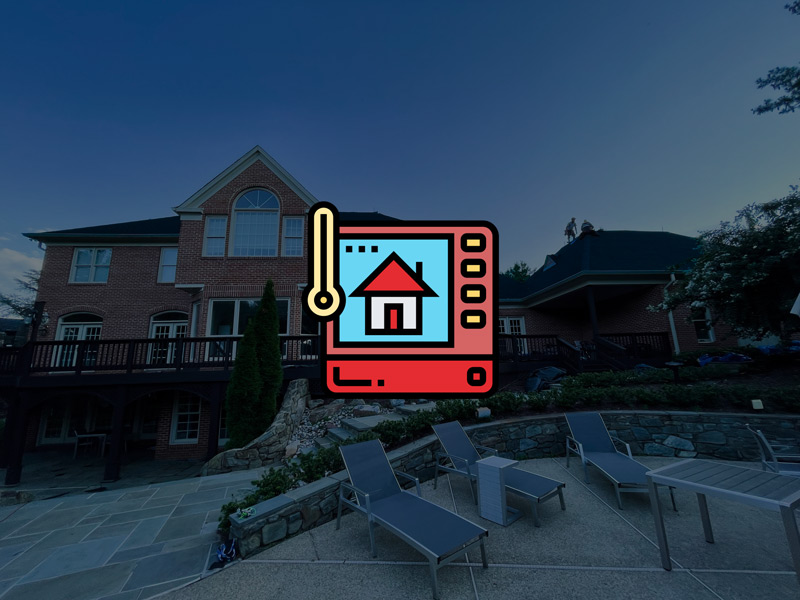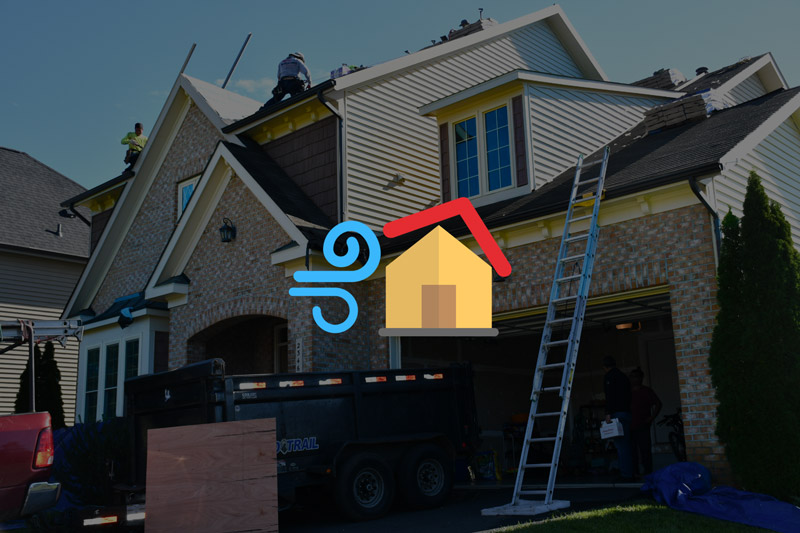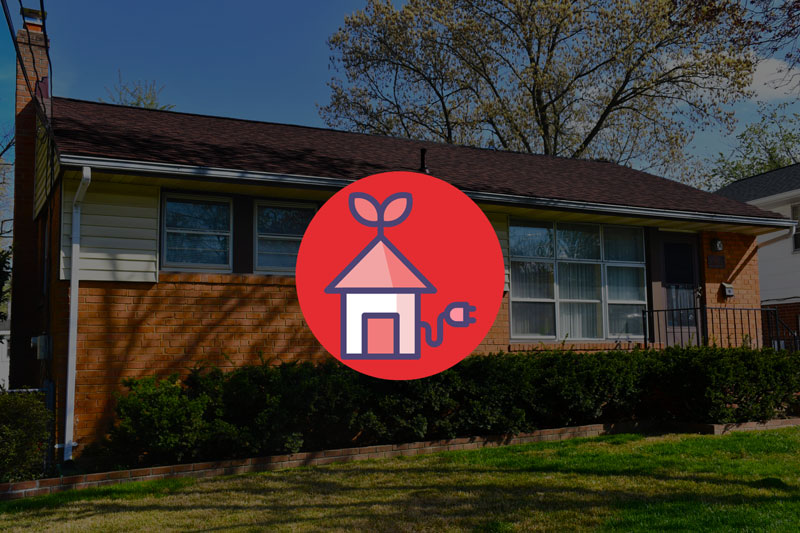Replacing Your Roof in Spring: Enhancing Value and Protection
Maintaining a structurally sound roof is vital to safeguard your home from various weather conditions, such as rain, snow, wind, and extreme temperatures. Over time, roofs can deteriorate due to aging, wear and tear, and exposure to the elements. Regular inspections and necessary repairs are essential to ensure your roof remains in optimal condition. However, in some cases, roof replacement becomes necessary to guarantee maximum protection.

Understanding the Optimal Timing for Roof Replacement
The Significance of Timing and Weather Conditions
When it comes to replacing your roof, timing is crucial. The weather conditions during the installation process can greatly impact the outcome and durability of your new roof. Spring, with its mild and predictable weather patterns, emerges as an ideal season for roof replacement. The moderate temperatures and reduced chances of extreme weather events allow for a smoother and more efficient installation process.
Spring: An Ideal Season for Roof Replacement
Spring brings a host of advantages that make it the optimal time to replace your roof. First, the mild temperatures of spring provide a favorable working environment for roofing contractors. Extreme heat or cold can impede the proper sealing of roofing materials, making it challenging to achieve a reliable and long-lasting installation. By choosing spring, you ensure that the materials bond effectively, resulting in a structurally sound roof.
Effects of Winter on Roofs and the Need for Spring Repairs
Winter can be harsh on roofs, exposing them to freezing temperatures, heavy snow, ice dams, and moisture infiltration. These factors can cause damage to shingles, compromise the integrity of the roof’s structure, and increase the risk of leaks. Therefore, it is essential to inspect your roof after the winter season and address any existing issues promptly.Replacing your roof in spring allows you to tackle the damage caused by winter effectively. It ensures that any vulnerabilities or weaknesses are addressed before the more intense weather conditions of summer arrive. By being proactive in spring, you can prevent further deterioration and extend the lifespan of your roof.

Taking Advantage of Milder Weather Conditions
Explaining the Impact of Weather on the Roof Replacement Process
Weather plays a significant role in the roof replacement process. Extreme temperatures, high humidity, or inclement weather can pose challenges and affect the quality of the installation. Optimal weather conditions are crucial to ensure that the roofing materials adhere correctly and that the overall process proceeds smoothly.
Detailing How Spring Offers Favorable Conditions for Efficient Roof Installation
Spring, with its milder weather conditions, provides an excellent opportunity for efficient roof replacement. The moderate temperatures allow for better flexibility of roofing materials, making them easier to handle and install. Additionally, the reduced moisture levels in the air during spring help ensure proper bonding of shingles, preventing issues such as lifting or warping that can occur in more humid conditions. Furthermore, spring offers longer daylight hours, providing contractors with ample time to complete the installation without feeling rushed. The extended daylight allows for better visibility and facilitates the roofing team’s ability to inspect and address any potential issues that may arise during the installation process.
Benefits of Avoiding Extreme Temperatures and Inclement Weather during the Replacement
By choosing to replace your roof in spring, you can avoid the challenges associated with extreme temperatures. High temperatures can cause materials to expand and become more pliable, making them susceptible to damage during installation. On the other hand, freezing temperatures can hinder the proper sealing and adhesion of roofing components, leading to potential leaks or premature deterioration.

Addressing Winter Damage and Wear
Highlighting the Potential Damage Caused by Winter Elements to Roofs
Winter can take a toll on roofs, subjecting them to various damaging elements. Snow, ice, freezing temperatures, and fluctuating weather conditions can lead to significant wear and tear over time. It’s essential to address these issues to maintain a structurally sound roof.
Discussing Common Issues like Ice Dams, Snow Accumulation, and Water Infiltration
One of the most common problems during winter is the formation of ice dams. When snow accumulates on the roof, uneven heat distribution causes the melting snow to refreeze at the eaves, creating ice dams. These dams prevent proper drainage, leading to water pooling and potential leaks. Snow accumulation itself can also put excessive weight on the roof, potentially causing structural damage. Furthermore, winter brings an increased risk of water infiltration. As snow and ice melt, water can seep into the smallest cracks or gaps in the roof’s surface, leading to moisture penetration and subsequent damage to the underlying structure. This moisture intrusion can result in rot, mold growth, and compromised insulation, affecting both the roof’s integrity and the overall indoor environment.
Explaining How Early Spring Roof Replacement Helps Prevent Further Deterioration
Replacing your roof early in spring is a proactive approach to preventing further deterioration caused by winter damage. By promptly addressing issues such as ice dams, snow accumulation, and water infiltration, you can safeguard your home from potential long-term consequences. A new roof installed in early spring ensures that any existing problems are resolved, minimizing the risk of further damage as the seasons progress. It provides a fresh start and strengthens the roof’s ability to withstand the challenges of the upcoming year, including heavy rain, strong winds, and the heat of summer.

Preparing Your Roof for Summer Challenges
Upcoming Summer Season and Its Potential Challenges for Roofs
As spring transitions into summer, it’s essential to prepare your roof for the upcoming season’s challenges. Summer brings its own set of weather conditions that can impact the longevity and performance of your roof. By understanding these challenges, you can take proactive steps to ensure your roof remains in optimal condition.
How a Newly Replaced Roof Can Better Withstand Intense Heat, UV Radiation, and Heavy Rainstorms
A newly replaced roof provides enhanced protection against the intense heat, UV radiation, and heavy rainstorms commonly experienced during summer. By choosing the right roofing materials and installing them during spring, you create a strong defense against these challenges. The materials used in a roof replacement, such as heat-reflective shingles or metal roofing, can help mitigate the effects of intense heat. These materials reflect a significant portion of the sun’s rays, reducing the amount of heat absorbed by the roof and minimizing thermal expansion, which can lead to premature aging and deterioration.

Maximizing Energy Efficiency
Exploring How a New Roof in Spring Can Improve Energy Efficiency
Replacing your roof in spring provides an excellent opportunity to enhance the energy efficiency of your home. An old or damaged roof can compromise insulation, ventilation, and solar reflectance, leading to energy loss and increased utility bills. By investing in a new roof during the spring season, you can optimize energy efficiency and enjoy long-term cost savings.
Discussing the Benefits of Proper Insulation, Ventilation, and Solar Reflectance
Proper insulation is crucial for maintaining a comfortable indoor temperature and reducing the strain on your cooling system during the hot summer months. A new roof installation allows for the integration of modern insulation materials, such as spray foam or fiberglass batts, which effectively minimize heat transfer between the interior and exterior of your home. This insulation helps to keep your home cooler in the summer, reducing the need for excessive air conditioning and lowering energy consumption. In addition to insulation, proper ventilation plays a vital role in maximizing energy efficiency. Adequate airflow through the attic and roof space helps regulate temperature and prevent the buildup of heat and moisture. A well-ventilated roof allows hot air to escape, reducing the need for excessive air conditioning and improving overall energy efficiency.
How a Well-Insulated Roof Can Reduce Cooling Costs During Hot Summer Months
When your roof is properly insulated, it acts as a barrier against heat transfer, keeping your home cooler and reducing the need for excessive air conditioning. This directly translates into lower cooling costs during the hot summer months. By investing in a new roof in spring and ensuring proper insulation, you can enjoy a more energy-efficient home, reduce your carbon footprint, and save money on your utility bills.

Enhancing the Value of Your Home
Explaining How a Roof Replacement Can Increase Property Value
Replacing your roof in spring is not only a practical decision but also a smart investment that can significantly enhance the value of your home. A new roof is an attractive feature for potential buyers and can make your property stand out in the competitive real estate market. It gives the impression of a well-maintained and cared-for home, which can increase its overall market value. When potential buyers consider purchasing a home, they often prioritize the condition of the roof. By replacing your roof in spring, you ensure that your property has a fresh, sturdy, and visually appealing roof that can serve as a selling point. This investment not only offers peace of mind to potential buyers but also increases their confidence in the overall quality and condition of the property.
How a New Roof Improves Curb Appeal and Boosts Buyer Confidence
The roof is a prominent visual element of your home’s exterior, contributing significantly to its curb appeal. A worn-out, damaged, or outdated roof can detract from the overall aesthetic appeal of your property. On the other hand, a new roof instantly revitalizes the look of your home, making it more visually appealing and appealing to potential buyers. Aesthetics aside, a new roof also boosts buyer confidence. It provides assurance that the home is protected from the elements and that they won’t have to worry about costly roof repairs or replacements in the near future. A well-maintained roof indicates that the homeowner has taken care of the property, giving buyers the confidence to move forward with the purchase.
Highlighting the Potential Return on Investment and Long-Term Savings
While replacing your roof in spring requires an initial investment, it offers long-term financial benefits. A new roof can provide a high return on investment by increasing the value of your home. The money spent on the roof replacement can be recouped when selling the property, making it a worthwhile investment.
Please Share!






